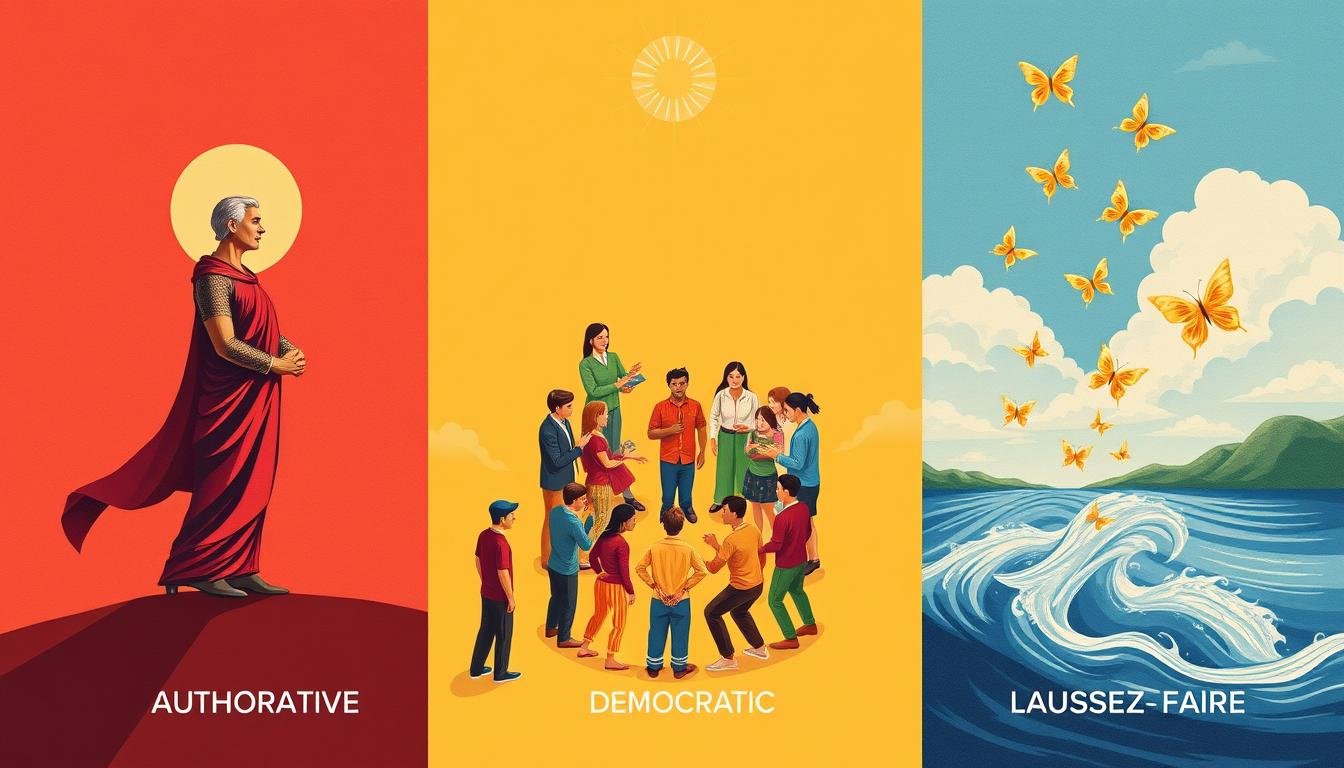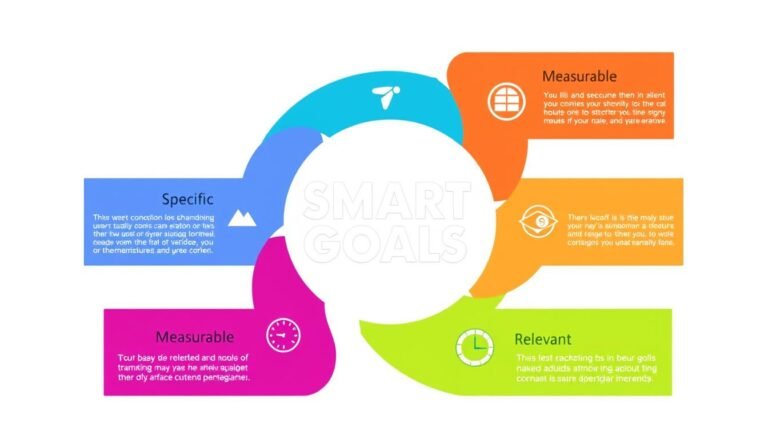Understanding Lewin’s Leadership Styles Theory
Have you ever thought about how your leadership style affects your team? Kurt Lewin introduced his Leadership Styles Theory in 1939. It shows us the different leadership styles and guides us in modern management. By looking into Lewin’s work, we learn about the various ways leaders can lead and their impact on teams. This article will dive into Lewin’s leadership theory. We’ll look at the three main styles—autocratic, democratic, and laissez-faire—and why they matter for a successful team.
Key Takeaways
- Lewin’s Leadership Styles Theory highlights three primary leadership styles: autocratic, democratic, and laissez-faire.
- Each style plays a crucial role in influencing team dynamics and organizational effectiveness.
- Understanding the strengths and weaknesses of each style can improve decision-making and foster better teamwork.
- Leaders can flexibly adapt their approaches based on specific situations and team needs.
- A deep understanding of these styles can lead to improved engagement and performance in teams.
What is Lewin’s Leadership Theory?
Kurt Lewin’s Leadership Theory is a key framework for understanding leadership in groups. It looks at the Background of Lewin’s Leadership Styles. Lewin and his team found three main leadership styles: autocratic, democratic, and laissez-faire. These styles still shape how we think about leadership today.
Background of Lewin’s Leadership Styles
Lewin first identified leadership styles in 1939. His work showed that leadership can be divided into three main types. This idea has guided many studies and theories since then. The Types of Leadership Styles Lewin found show how different leadership styles affect teams and company culture. These simple categories are still useful today.
Significance in Modern Management
The Significance of Lewin’s Leadership Theory is clear in today’s management world. Leaders now face many challenges that require them to be flexible. Lewin’s theory teaches that no one leadership style works in every situation. Leaders should use different strategies based on their team’s needs. This approach helps with making better decisions and building strong team relationships.
| Leadership Style | Characteristics | Advantages | Disadvantages |
|---|---|---|---|
| Autocratic | Centralized decision-making, minimal team input | Quick decision-making, useful in urgent scenarios | Limited feedback, may stifle team creativity |
| Democratic | Encourages participation, promotes collaboration | Higher quality decisions, increases team engagement | Potential for conflicting opinions, slower decision-making |
| Laissez-faire | Delegates decision-making, promotes autonomy | Supports creativity and personal responsibility | Risk of reduced productivity, may lead to misalignment |
Leadership Styles Theory (Lewin’s)
Understanding leadership styles is key to modern management. Kurt Lewin found three main styles: Autocratic, Democratic, and Laissez-Faire. Each style affects team work and productivity differently. Knowing about these styles helps us see which ones work best in different places.
Overview of the Three Primary Styles
Lewin’s Theory breaks leadership into three types, each with its own traits and effects on teams:
- Autocratic Leadership: This style has a leader who makes all the decisions alone. They don’t listen to others much. While it gets things done fast, it can make teams unhappy and unmotivated.
- Democratic Leadership: This is when leaders listen to their team and value everyone’s ideas. Teams work better and do their best when they feel heard.
- Laissez-Faire Leadership: This style lets teams make their own decisions. It’s good for jobs that need special skills but can be a problem if teams don’t motivate themselves.
Historical Context and Development
Lewin’s Leadership Theory has a long history. In 1939, Lewin and his team studied how different leadership styles affected school groups. They found that involving everyone in decisions led to better results and happier teams. This work helped shape later leadership theories, like situational and transformational leadership.
| Leadership Style | Characteristics | Pros | Cons |
|---|---|---|---|
| Autocratic Leadership | Centralized authority, decision-making independent of group input. | Efficient task completion, clear direction. | Lower morale, unhealthy team dynamics. |
| Democratic Leadership | Emphasizes collaboration and individual contributions. | High team engagement, commitment to goals. | Requires time for group input, potential for conflict. |
| Laissez-Faire Leadership | Minimal guidance, allowing autonomy in decision-making. | Encourages creativity, suitable for specialized teams. | Risk of low productivity without strong self-motivation. |
Understanding Autocratic Leadership
Autocratic leadership is a key style in Leadership Styles Theory (Lewin’s). It focuses on one person in charge who makes all the decisions without asking the team. It’s important to know about autocratic leadership to understand its effects on teams and how well an organization does.
Characteristics of Autocratic Leaders
Autocratic leaders are known for being direct and decisive. They make decisions quickly and clearly. They also don’t ask for feedback and keep a clear line between themselves and their team. This can lead to less teamwork.
These traits make autocratic leaders good in situations that need quick decisions. They do well in emergencies or when things need to be clear and fast.
When to Use Autocratic Leadership
Autocratic leadership works well in certain situations. For example, when decisions need to be made fast or when a team is new. It can give the direction and speed needed to meet goals quickly and well.
Potential Drawbacks of Autocratic Leadership
Autocratic leadership also has downsides:
- It can make team members less happy and motivated.
- It can lead to more conflicts because of the strict way of leading.
- It can stop creativity since people might not share their ideas.
Using this style for too long can make the workplace toxic. Employees might feel unimportant and not connected. Studies show that while it can be efficient in the short term, it can harm team morale and working together in the long run.
| Aspect | Autocratic Leadership | Democratic Leadership | Delegative Leadership |
|---|---|---|---|
| Decision-Making | Centralized by leader | Collaborative with input | Minimal guidance from leader |
| Team Engagement | Low | High | Variable |
| Time Sensitivity | Excellent in crisis | Requires more time | Time-consuming |
| Creativity | Limited | Encouraged | Dependent on team |
Exploring Democratic Leadership
Democratic leadership, also known as participative leadership, is a way of leading that values everyone’s input. It’s all about making decisions together. This approach makes sure everyone’s voice is heard and respected. The Democratic Leadership Characteristics include strong communication and a focus on getting everyone involved.
Defining Democratic Leadership Characteristics
Key elements of democratic leadership include:
- Encouraging input from all team members to foster better engagement.
- Leaders maintaining final authority while still valuing all contributions.
- Creating a culture of open communication, leading to innovation and creative problem-solving.
This style of leadership helps improve team dynamics, job satisfaction, and overall performance.
Benefits of Participative Leadership
The Benefits of Participative Leadership are clear and make a big difference:
- Enhanced quality of contributions due to inclusive practices.
- Stronger team cohesion driven by engaged team members.
- Heightened accountability as individuals take personal responsibility for outcomes.
These benefits boost morale and create a team that works well together.
Challenges of Democratic Leadership
Despite its benefits, democratic leadership has its challenges, known as Participative Leadership Drawbacks:
- Decision-making processes can be prolonged due to thorough discussions.
- Potential for conflict may arise when differing opinions emerge.
- Indecisiveness can occur if leaders do not guide discussions effectively.
Leaders need to overcome these challenges to keep the team productive and focused.
Conclusion
Lewin’s Leadership Theory is key to understanding different leadership styles. It shows us the pros and cons of autocratic, democratic, and laissez-faire leadership. This helps leaders pick the right style for their team and goals.
Effective leadership isn’t just one way. Autocratic leadership works in emergencies or with new teams but can lower motivation over time. Democratic leadership boosts teamwork and performance. Laissez-faire leadership encourages creativity and empowerment in skilled teams, if managed well.
Looking ahead, Lewin’s theory still has value but we should also consider other approaches. Daniel Goleman’s ideas and transformational leadership might be better for today’s complex work environments. Exploring these options could lead to more success and lasting performance.
Source Links
- Kurt Lewin’s 3–Style Leadership Model – BusinessBalls.com
- Essential Elements of Lewin’s Leadership Theory: A Breakdown
- Leveraging Lewin’s Leadership Framework
- Essential Elements of Lewin’s Leadership Theory: A Breakdown
- Leadership Styles and Frameworks You Should Know
- Essential Elements of Lewin’s Leadership Theory: A Breakdown
- 6 Leadership Styles and Frameworks
- Leadership Styles | Organizational Behavior and Human Relations
- Lewin’s Leadership Theory Explained | Leadership and Performance Partners
- Essential Elements of Lewin’s Leadership Theory: A Breakdown
- Kurt Lewin Leadership Styles – Leadership Ahoy!
- APA Format 6th Edition Template
- Navigating Lewin’s Leadership Styles as a New Manager
- Essential Elements of Lewin’s Leadership Theory: A Breakdown
- Criticism of the Lewin leadership styles: Why they are bad, and why you should avoid them – Leadership Ahoy!







